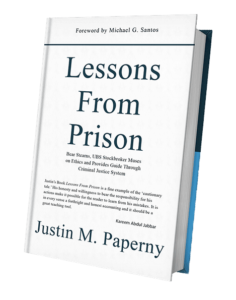I stood outside a case manager’s office years ago watching a guy plead his case. He said the same thing I’ve heard a hundred times: “I didn’t mean to do it. I’ve got a job waiting. My family needs me.”
The case manager didn’t blink. “You should’ve thought about that before you broke the law,” she said without looking up from her paperwork.
It wasn’t personal. It’s just how things work.
If you’re hoping sympathy will get you home early, you’re wasting time. The Bureau of Prisons isn’t interested in what you meant to do or how sorry you are. They care about what you’ve done since the conviction—and what you can prove.
The First Step Act Didn’t Change That
The First Step Act created a path for earlier release—but only for people who qualify as “extraordinary and compelling.” That’s not a title you give yourself. That’s something you have to earn. And if you think finishing RDAP or taking a few classes is enough, you don’t understand how this works.
I’ve talked to plenty of people who say, “I don’t need a reentry plan. I didn’t really do anything wrong.” Every time I hear that, I know they haven’t thought about what their case manager is actually looking for.
They’re not looking for someone to explain their innocence. They’re looking for someone who shows they’ve done the work, taken responsibility, and built something that’s measurable and clear.
Most People Ask for Early Release the Wrong Way
Here’s what usually happens.
Someone waits outside their case manager’s door. When they get called in, they say they’ve got a job lined up, their kids are struggling, and they just want to go home. They finish by saying they’re sorry and they’ve learned a lot.
That speech might sound honest. But it’s what every case manager hears—every single day.
What they don’t hear often is someone handing them a written reentry plan. Not a wish list. Not a one-pager. A real plan.
A plan that lays out what they’ve done since sentencing. What they’ve learned. What they’ve built. A plan that shows what kind of person they are now—not just who they were when they got indicted.
What I Told the Chrisleys Before They Reported
Before Todd and Julie Chrisley reported to prison, I told them to create a reentry plan. Not to impress anyone. Not to game the system. To show the BOP they were serious.
Not just about doing their time—but about changing how they spent it.
No amount of media attention or public opinion changes how the BOP evaluates you. They don’t care who you were on TV. They care about what you do after lights out. They document everything—your work detail, your behavior, your program participation, your attitude.
A good plan shows them you’re not just passing time. You’re building something they can verify. And over time, that can matter.
Sympathy Doesn’t Work—Documentation Does
You don’t need to be a good writer. You just need to be honest and specific.
Write down what happened in your case. Own the role you played. Document the programs you’re taking and what you’re learning. Write about the work you’ve done—inside and out. If you can’t work in your old field, what field are you preparing for? Who have you helped inside? What are your plans when you’re released—and how are you preparing now?
Back it up. Letters from staff. Proof of completed programs. Notes from mentors or supervisors. Build a paper trail that says, “I’ve done the work—and here’s how you know.”
Most people wait and hope—this shows you’re doing more than that.
Are You Building a Record That Actually Means Something?
If a judge, case manager, or BOP administrator pulled your file today, would they see effort or excuses?
Would they see someone still talking about how unfair the sentence was—or someone showing exactly how they’ve responded to it?
You’re not owed anything. But there’s a big difference between asking and proving you’ve earned it.
Start building the record now.
Justin Paperny
Join our free weekly webinar every Tuesday at 11AM Pacific / 2PM Eastern. Or If you’d rather talk one-on-one, you can also book a personal call with us.
We’ll help you put together a plan that case managers and judges can actually use to see why you don’t belong in prison any longer than necessary.




